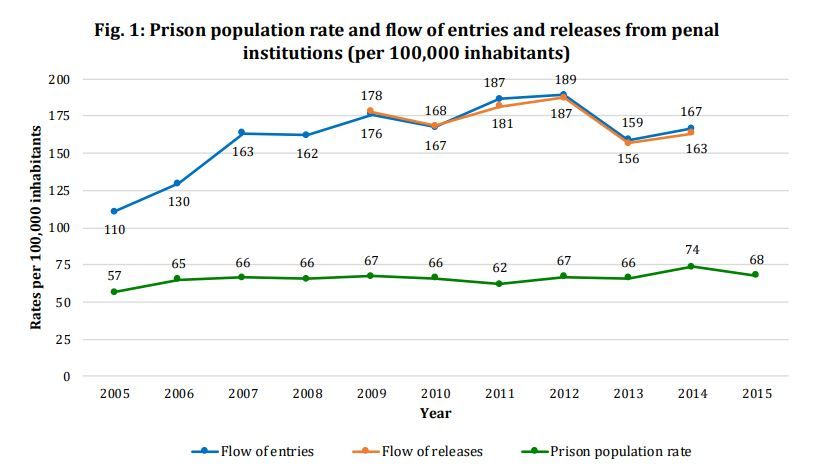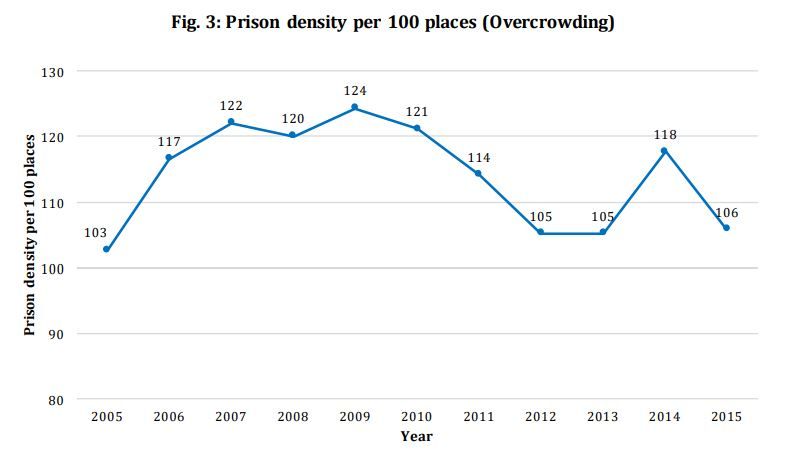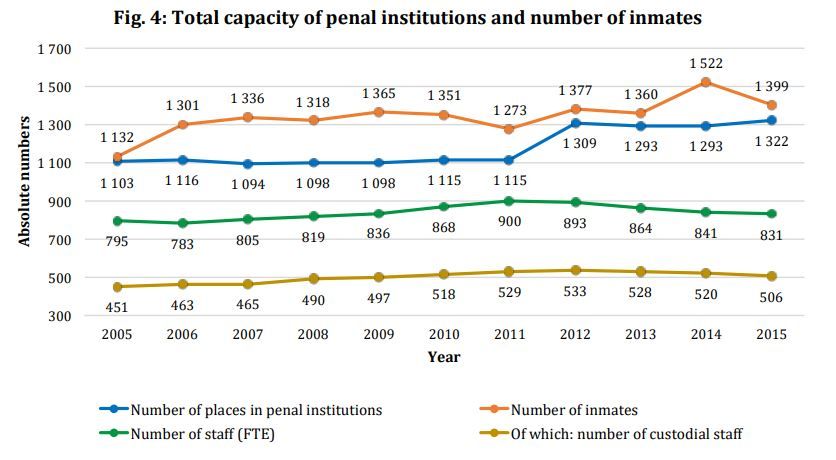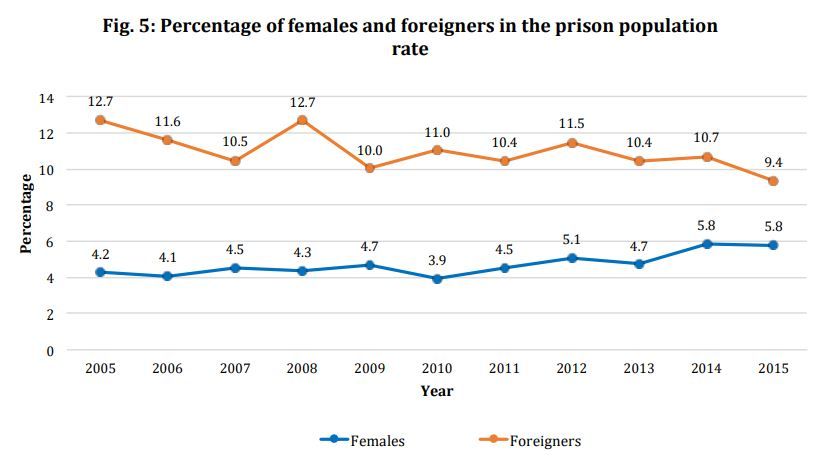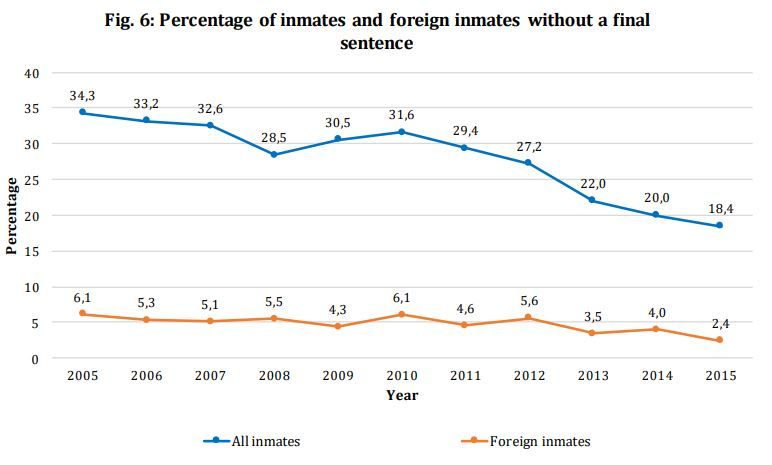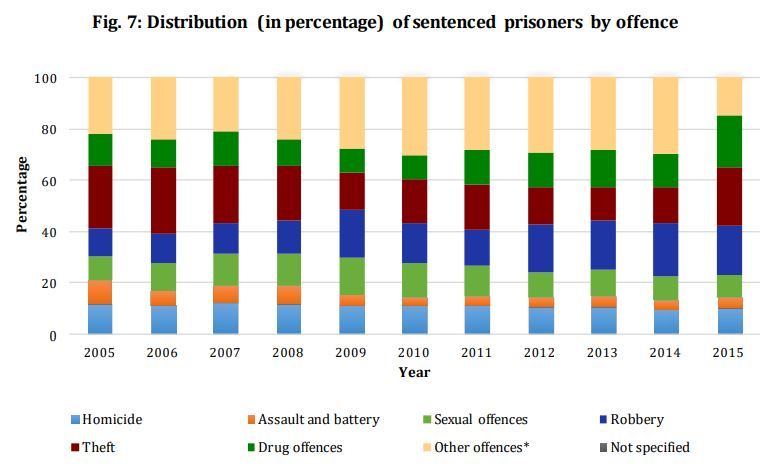News
STA, 4 December 2018 - Slovenian authorities and banks took part in a massive Europe-wide effort to combat money laundering between September and November. In Slovenia, 33 money laundering cases were investigated during that period, with the authorities uncovering 32 money mules and seizing nearly EUR 1m.
The Police Administration said in a press release on Tuesday that it had investigated an increased number of money mules, individuals who receive money stemming from criminal activities to their bank accounts.
The funds most often come from fraud, business fraud and cyber-crimes such as IT breaches, phishing and online fraud, the police added.
What is a money mule?
A money mule is a person who transfers in person, via a courier, or electronically, money that has been illegally acquired for someone else. A money mule is usually paid from the money transferred, and often engage in such work thinking it is legitimate.
Fraud, forgery and money laundering
During the autumn campaign, the Slovenian police investigated 33 cases related to fraud, business fraud, forgery of documents and money laundering. The police investigated 32 money mules who received a total of EUR 2.8m to their bank accounts.
In cooperation with the Office for Money Laundering Prevention and Slovenian banks, the police temporarily seized EUR 970,000. They also arrested two suspects and conducted two house searches.
Money mules in Slovenia are typically foreign citizens who open bank accounts in the country to launder money.
The press release also says that Slovenian police conducted a long criminal investigation that resulted in the apprehension of two money mules, both Serbian citizens.
They were part of a scheme defrauding US companies via telephone and the internet. More than 60 transactions were carried out, defrauding 10 US companies of a total of EUR 3.7m.
In total, the Europe-wide campaign, dubbed EMMA 4, uncovered more than 1,500 money mules and nearly 170 people were arrested, the European Banking Federation said in a press release today, as it launched a campaign against money muling.
STA, 4 December 2018 - Slovenia has very crowded prisons, but a very short average length of imprisonment in comparison with all 47 Council of Europe (CoE) and 28 EU members, follows from CoE's report on prisons for 2005-2015, released on Tuesday.
Labelled high, prison density in 2015 reached 105.8 persons per 100 available places in prisons, however, the number of available places also rose, from 1,103 to 1,322, or by 20%.
Another indicator rated as high in comparison with the data for all CoE and EU members is the rate of deaths per 10,000 inmates, which reached 39.4 in 2014.
Fewer than 1,400 people behind bars
Meanwhile, Slovenian prisons did very well in terms of prison population, which despite increasing by 19% from 1,132 to 1,399, remains low.
There were 57 prisoners per 100,000 residents in Slovenia in 2005, but the figure rose to 68 in a decade.
Another low segment is the period prisoners spent behind bars, which dropped by 15% from an average 6.2 months in 2005 to 5.3 months in 2014.
Suicide rate was also low in comparison with the other countries, with no suicide committed in 2014, but 12.3 per 100,000 inmates in the decade.
The report labels as medium most of the other parameters in comparison with all CoE and EU members.
Interestingly though, the number of female prisoners in Slovenia increased and the number of foreigners serving time in the country decreased.
More women, fewer foreigners
The number of women prisoners increased by 37%, with their shares representing 4.2% of all prisoners in 2005 and 5.8% in 2015.
The number of foreign nationals imprisoned in Slovenia fell from 144 in 2005 to 131 in 2015, which represented 12.7% and 9.4% of the prison population, respectively.
The number of prison guards, or custodial staff, also increased, from 451 to 506, and they accounted for almost 61% of all staff working in Slovenian prisons.
The average age of the prison population three years ago was 35, and an average daily cost an inmate was to the national budget stood at slightly over 70 euro a day, a figure calculated as the 2008-2014 average.
The report Prisons in Europe 2005-2015 also says that in 2009-2014, the number of releases from prison in Slovenia dropped by 8%, from 178 per 100,000 residents to 163.
The percentages of prisoners serving sentences for robbery and drug offences increased, while the percentages of those serving time for homicide, assault and battery, sexual offences, theft, and other types of offences decreased.
The full report is available at http://wp.unil.ch/space/files/2018/12/Slovenia.pdf
Ex-Yu Aviation reports that travellers to and from the UK will have new option in summer 2019, with British Airways launching a service that connects Ljubljana and Heathrow airports. The flights will run from July 15 to September 2, and will be an addition to the other regularly scheduled services between the British and Slovenian capitals, with easyJet flying out of Stanstead and Gatwick, and Wizz Air working from Luton.
Related: How to get to Ljubljana Airport from the city
The British Airways service from London Heathrow (LHR) have the flight number BA690, taking off from the UK at 17:20 and touching down at Ljubljana Airport at 20:35. From Slovenia to the UK the flight number is BA691, taking off at 21:20 and landing at 22:35. In both directions the route will be served by an Airbus A319
STA, 3 December 2018 - In a bid to address future challenges in business, the government plans to upgrade the national asset management strategy next year to make Slovenian Sovereign Holding (SSH) the driver of economic development in individual industries and companies, according to Finance Ministry State Secretary Metod Dragonja.
The announcement came as SSH held its annual conference on Monday, with Dragonja pointing out that it was time to adapt the strategy, "after we've managed to form a consistent governance framework in recent years".
The state asset custodian will now gradually complete its denationalisation obligations assumed when it absorbed the Slovenian Restitution Fund (SOD) in 2014 and incorporate the Bank Asset Management Company, Slovenia's bad bank, in 2020 and 2021.
A new approach to the development of specific industries and firms
"Our vision is to make SSH capable of taking on an active role in encouraging economic development in Slovenia and become the driver of development in individual industries and companies. The new asset management strategy will be drafted with this in mind," Dragonja said.
SSH has provided the Finance Ministry with its recommendations for improvements, but now everything is in the hands of the government and the National Assembly, SSH head Lidija Glavina told the press on the sidelines of the conference.
According to the SSH management, the strategy will have to be tweaked in terms of goals and success indicators, and classifications of assets should be adjusted.
Currently, a major goal set down in the strategy is return on equity (ROE), which was to hit 7.1% in 2017 and is to stand at 8% in 2020.
SSH's ROE for 2017 stood at 6.5% last year, which is the highest yet but still below plans, which the management of SSH attributes to the rising share of important and strategic assets in its portfolio. Such companies have other priorities than creating ROE, the management pointed out.
Tourism and finance are easier than energy and transport
According to Glavina, the 8% goal in ROE is attainable in finance and tourism and economy, but it will be hard to hit 8% in energy and transport, which have the highest share of strategic assets.
Meanwhile, Dragonja pointed out that SSH will have its hands full in tourism, as the strategy for sustainable development of tourism envisages consolidation and restructuring efforts in the branch.
The state secretary also listed some of the future tasks for the state in corporate governance, including the transformation of pension fund KAD into a demographic reserve fund and a clear definition of its mission, investment strategies and goals.
Additionally, the changes to the 2019 budget implementation law bring provisions that will put state-owned companies that are not managed by SSH on the same foundations.
As regards SSH itself, 2019 will be marked by continued efforts to sell the remainder of NLB to up to 25% minus one share, and efforts to sell Abanka, with Glavina saying that the bank would be sold before the deadline expires in mid-2019.
STA, 3 December 2018 - Representatives of the government and trade unions on Monday signed annexes to the collective agreements in the public sector securing rises in pay and bonuses for a majority of employees. Several unions have pulled out of the deal today, which however has no effect on its validity.
The agreement, worth around EUR 308m in the 2019-2020 period and including pay increases of between one to four brackets and increases of some bonuses, means that the strike wave announced for the beginning of December has been averted.
The measures, which will be introduced gradually, include the promotion by one wage bracket or around 4% higher wages for public sector employees up to the 26th wage bracket.
Wages for a majority of employees above the 26th wage bracket will increase by two wage brackets, while employees at posts which require a master's or PhD degree in science or specialisation will see their wages rise by three brackets.
Head teachers and nurses and midwives at the most demanding positions will get additional pay raises.
Holiday pay and bonuses also rising
The deal also increases some bonuses such as those for work on Sundays (from 75% to 90% of the hourly rate), holidays (from 90 to 120%) and for night work (from 30% to 40%) as of 1 September 2019.
It also introduces a bonus for 40 years of service (EUR 577.51) and raises pension severance from two to three average salaries, or three employee's salaries if it is higher than the average.
Prime Minister Marjan Šarec attended the signing and thanked the negotiators, saying that "what has been negotiated is the best that could be achieved," adding that the agreement "means that agreements can still be made in this country".
Šarec thanked the trade unions for understanding that the situation in the budget did not allow for more. "This is the moment when we can look each other in the eye and say that 'we have been reasonable'," he added.
Noting that the trade union representatives had realised the expectations of the employees, he added that the government and trade unions were not opponents, but should make possible that "people who work every day live a decent life".
Not all unions happy
Several unions have, however, pulled out of the deal, including the trade union of workers in the judiciary, which has given the government three months to meet its demands, otherwise it would step up its strike activities.
The decision was made after members of the union responded negatively to its representatives initialling the deal with the government. The union said that the government "did not want to enter a written commitment to actually sort out the situation in the judiciary."
The trade union of the Ministry of Defence also said today it would not sign the deal until the decree on the classification of jobs and titles in the Slovenian Armed Forces into wage brackets was harmonised and confirmed by the government in accordance with the initialled agreement.
Also refusing to sign the agreement were representatives of the KSS trade union confederation, which associates the trade unions of healthcare workers SPUKC, the trade union of accounting workers, the municipal traffic wardens' trade union and the SVS soldiers' trade union.
The unions, which did not participate in the negotiations, said in a press release today that the agreement and annexes did not eliminate the austerity measures from the 2012 fiscal balance act.
Police officers remain a sticking point
The government is meanwhile still in talks with police officers, who resumed their strike on 1 October to demand the government to restore pay ratios which were undermined when the government raised pay for some other uniformed workers in 2017.
They also demand a special bonus for each year of service, a bonus for being ready to act at all times, a compensation for not being allowed to join a political party, and the elimination of retirement anomalies.
While there was broad agreement among trade unions that the deal is good, some raised concern about whether there will be enough money for hospitals and elderly homes, which will have to give their employees higher wages.
"We're going to organise a strike as soon as wages are late in the first [public] institution," said Zvonko Vukadinovič, the president of the Trade Union of Healthcare and Social Care.
Health Minister Samo Fakin said there was enough money for everything, but he added that this would be true would only if productivity is increased and waiting lines cut, describing poor work organisation as "the cancer of Slovenian healthcare."
Public Administration Minister Rudi Medved likewise said the unions did not have to worry, since there would be enough money through 2021, the period for which the agreement is valid.
Related: Find out the average pay for various jobs in Slovenia here
Below is a review of today’s news in Slovenia, summarised by the headlines in the daily newspapers for Wednesday, December 5, 2018, as prepared by the STA:
DELO
Visit by Catalan president
"Who is afraid of the Catalan man?": While Quim Torro will not be received by any senior political official during his visit to Slovenia on Thursday and Friday, entrepreneurs do not seem to be afraid of potential Spanish pressure. (front page, 6)
Climate change
"Biggest threat to humanity": The climate change policies of a number of countries continue to be dictated by the interest of business, especially the powerful energy sector. (front page, 6)
SLS anniversary
"Swallows of Slovenian spring flocking together": The central 30th anniversary ceremony of the precursor to the Slovenian People's Party (SLS) was also attended by writer Boris Pahor. (front page, 2)
DNEVNIK
Earthquake safety in Ljubljana
"More than 86,000 people in Ljubljana live in apartments vulnerable to earthquakes": A study is in the making that will examine the earthquake security of 41,000 apartments built in Ljubljana before the 1963 Skopje earthquake. (front page, 2, 3)
The erased
"Janša's SDS helping erased": While the government coalition tried to limit the interest on damage payments to the erased, the Democrats (SDS) unexpectedly came to the aid of the group it despises, rejecting the coalition's proposal "out of spite". (front page)
FINANCE
Taxes
"Social security contributions to go up for most sole proprietors in 2019": The government's IMAD think thank is projecting a 5% nominal growth in wages, which will also entail higher obligatory social contributions for sole proprietors. (front page, 2, 3)
Karavanke tunnel
"How much more will the Slovenian side of the tunnel cost?": The paper points out that the selection of the second best bidder in the Karavanke tunnel tender after the exclusion of the Turkish bid would make the construction of the Slovenian section more expensive than the Austrian one, even though the former is shorter. (front page, 4)
Loan trends
"Company debt": A central bank report showed that the volume of long-term loans to companies rose to 16% of all new loans in September, which is 6 percentage points above the second quarter average and 7 points above third quarter average. (front page, 5)
VEČER
Maribor market
"Final year of indoor market": The central Maribor fruit and vegetable market has been plagued by problems for years. The latest blow has come with the owner of the market's indoor premises cancelling the lease. (front page, 10)
Headteacher scandal
"'Self-willed, unprofessional, illegal': The findings of the school inspectorate in the case of the school headteacher who is facing charges over banning two students from the school grounds after they sexually harassed two classmates, indicate the school should have acted against the harassment much sooner.
Judge scandal
"Poor favour to judicial integrity": By appearing at the election victory celebrations of the new Maribor Mayor Saša Arsenovič, investigating judge Janez Žirovnik, a key judge in the prosecution of the former mayor Franc Kangler, has truly undermined the ability of the public to perceive him as impartial. (front page, 2, 3)
December 4, 2018
Although Ljubljana is quite a snobbish city, there are only a few stores where conspicuous consumers can shop for the signifiers of their social status. Although relatively small in size, Pentlja, a store with a concept that’s between Town Hall and the Triple Bridge, just next to Vigo, aims to address this issue with its varied selection of what some might consider “the best”.
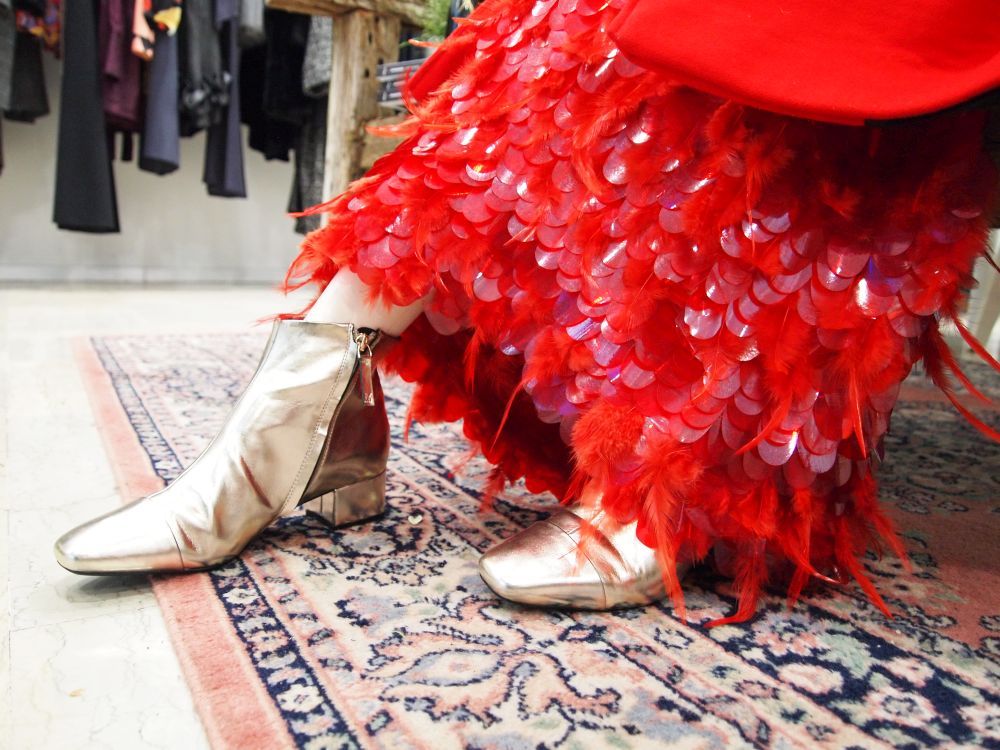
In terms of style you will find everything from neon feathered purses to classic monochrome coats, while brands on offer stem from Louis Vuitton bags to local stars such as Sania Reja Aske, whose recent Perunkasvarunka collection can be found in Pentlja in pretty much its entirety.
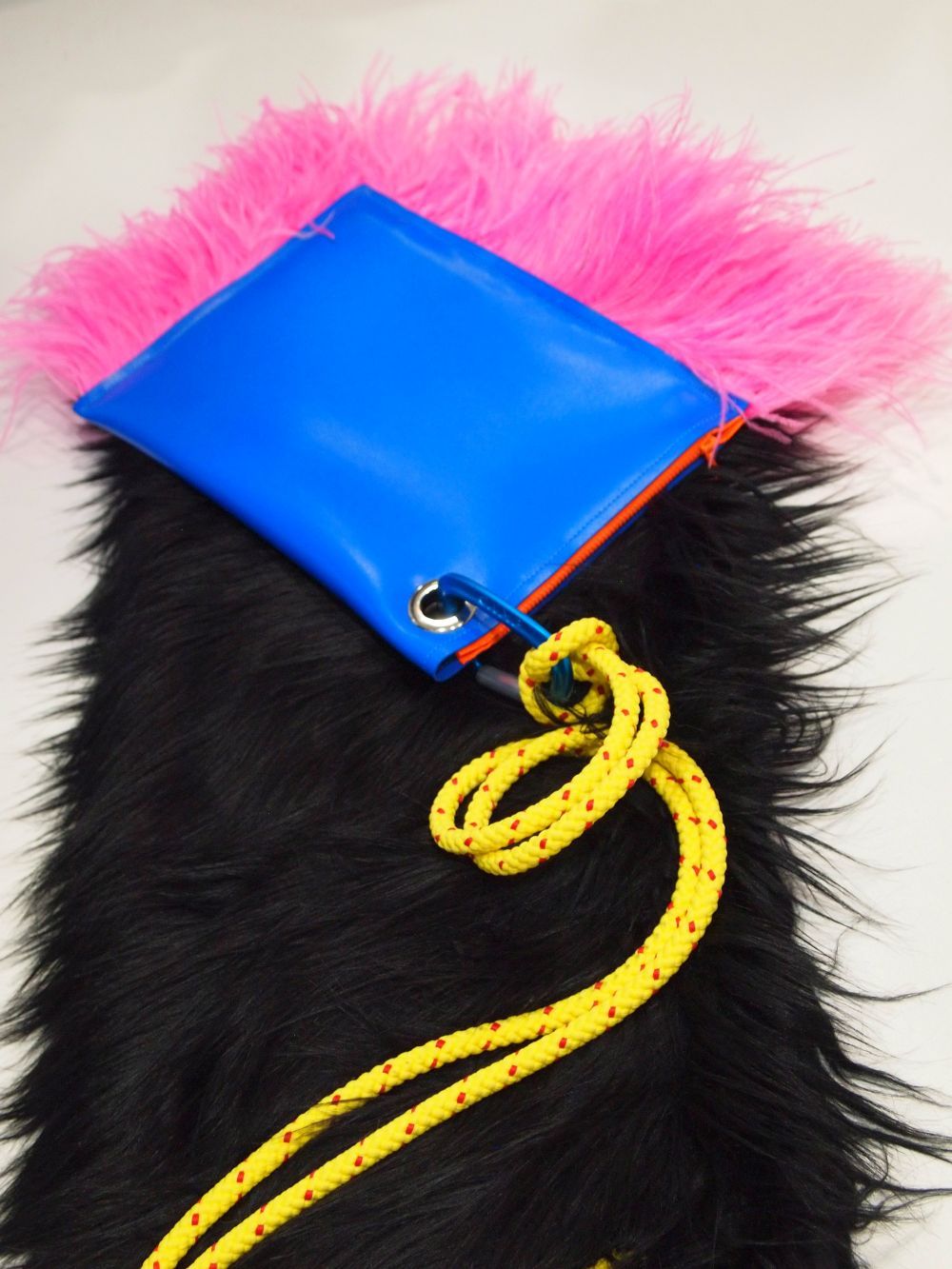
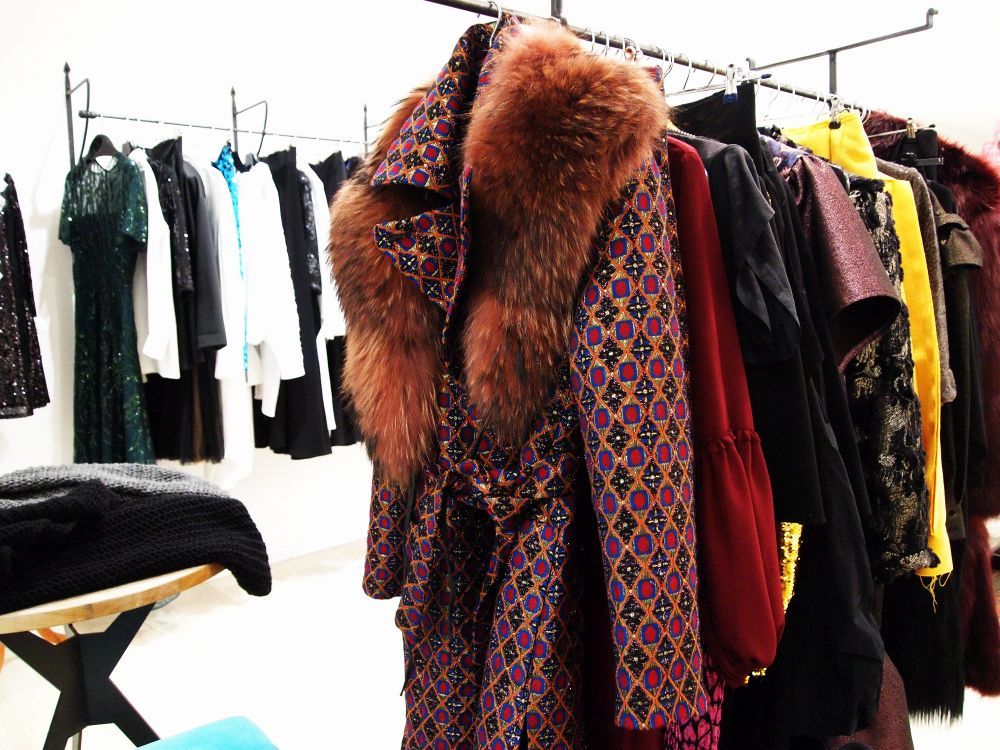
Prices? For Aske’s faux fur coat you’ll pay EUR 999. However, as it goes for most of the pieces you’ll find in the shop, you’ll be the only person on the planet to rock it. Hence the price.
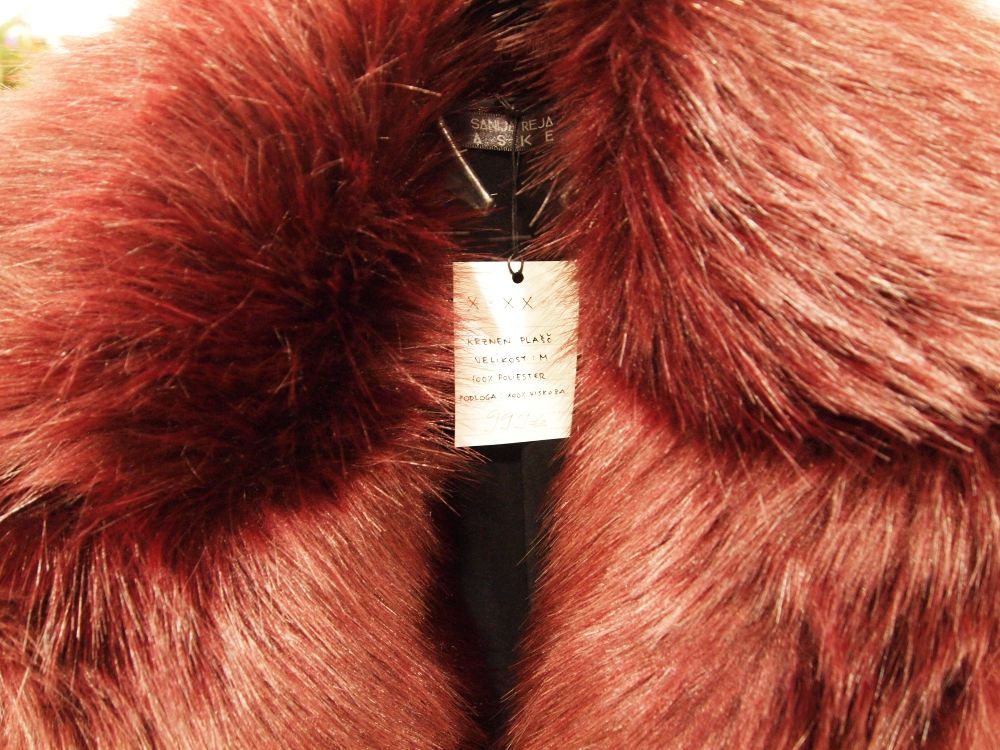
Apart from unique pieces and easily recognisable brands, such as LV, Pentlja also offers some other safe luxury purchases, notably Moët & Chandon champagne in bottles of all sizes and scents and fragrant candles from Ladurée, a French patisserie shop.
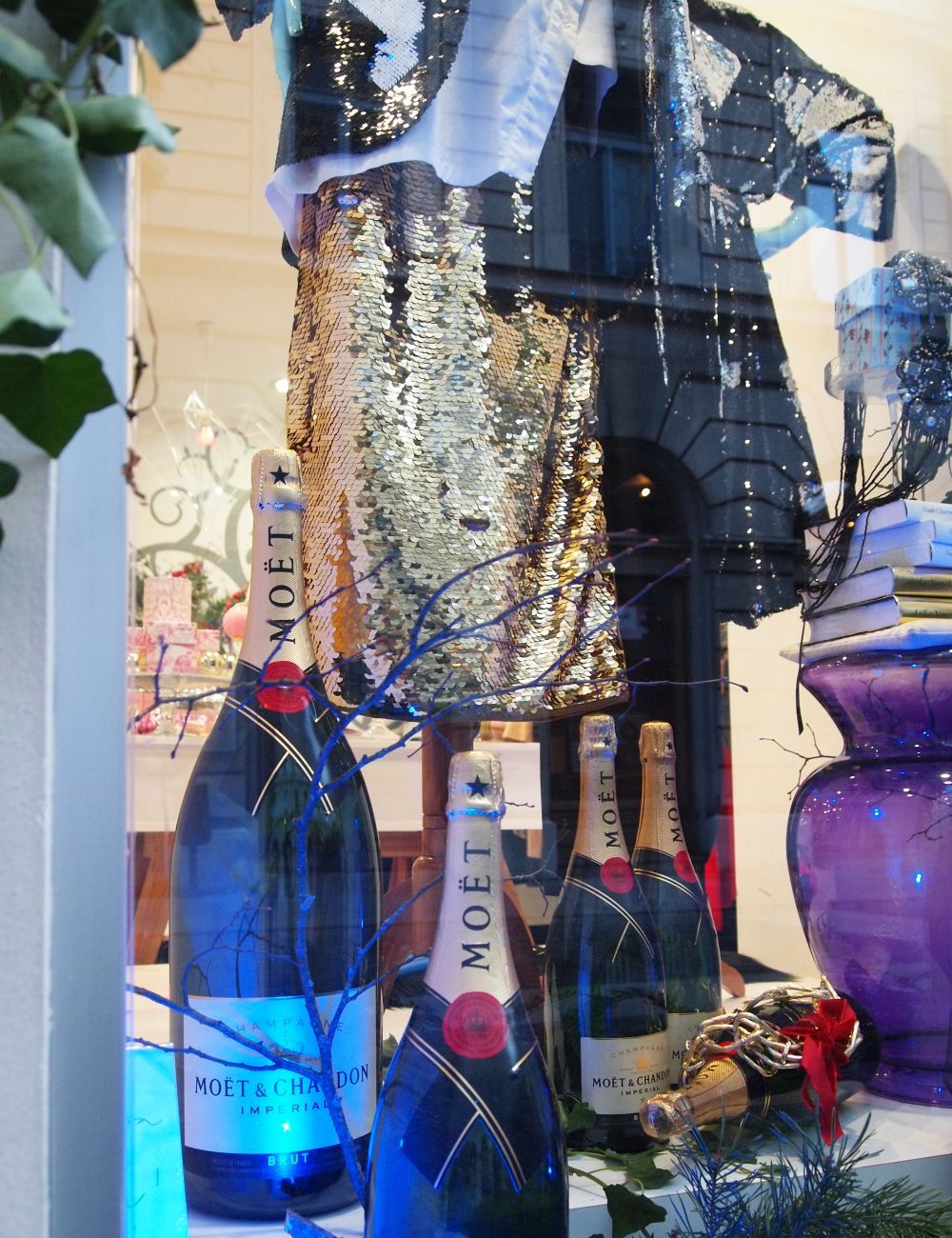
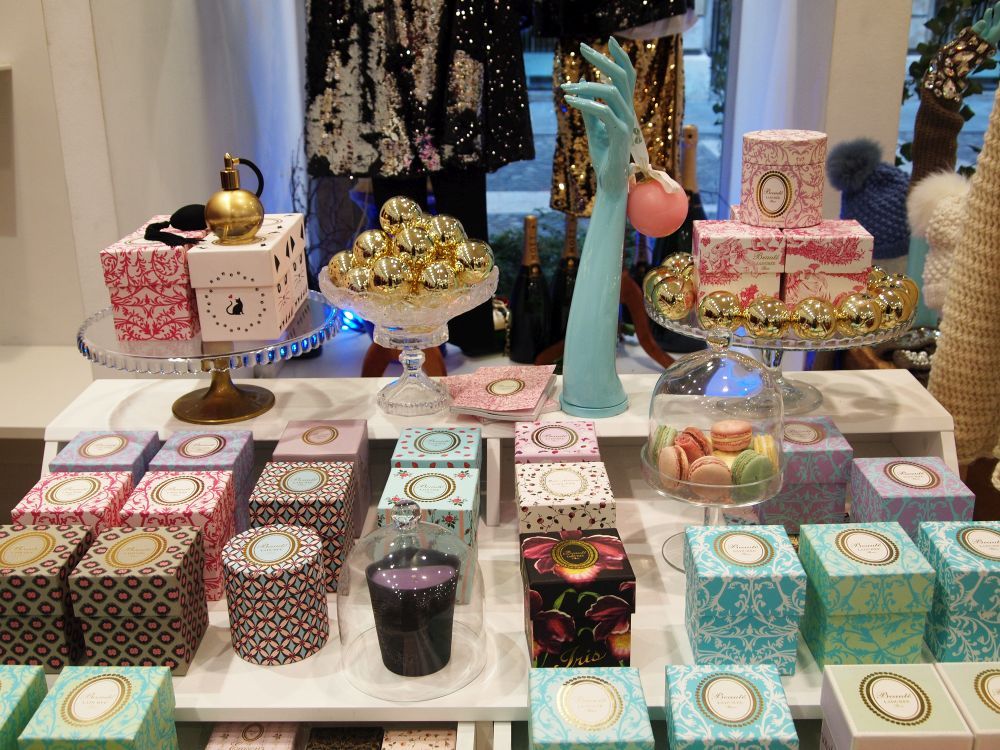
For some reason, next to fashion magazines, you can also find books in Pentlja. As the selection of titles appeared rather random, we learned that they all originate from Vale Novak publishing house. Perhaps so that even those too broke or too fashion averse to purchase any other items can go home with a collection of Slavoj Žižek’s jokes.
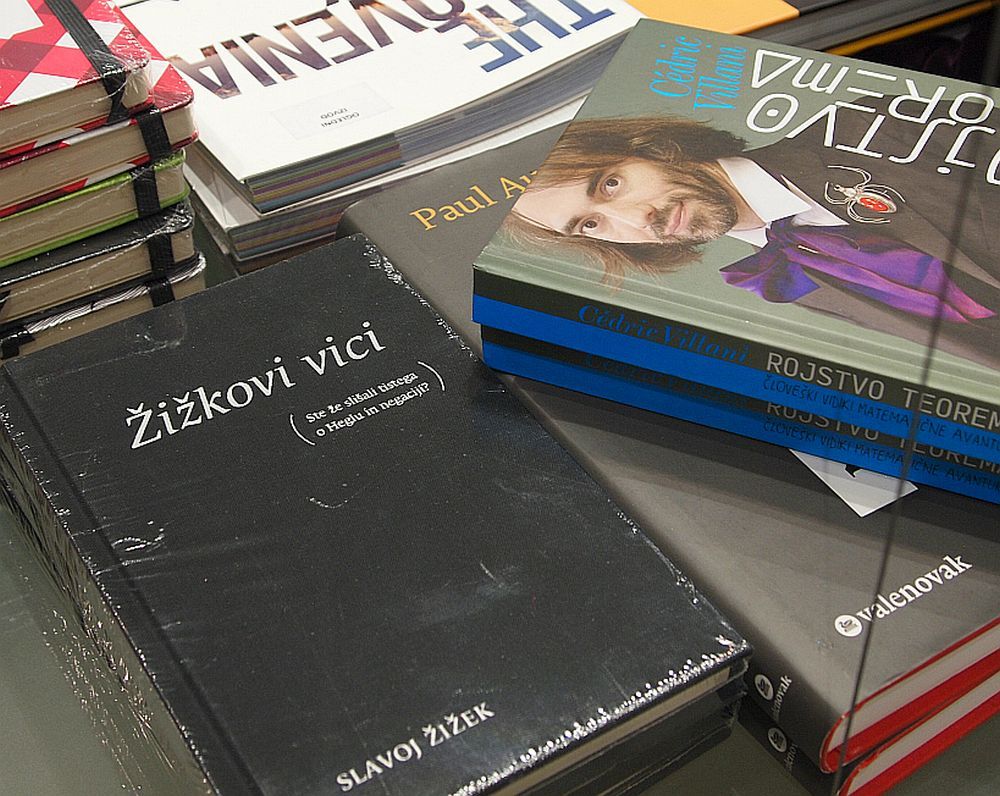

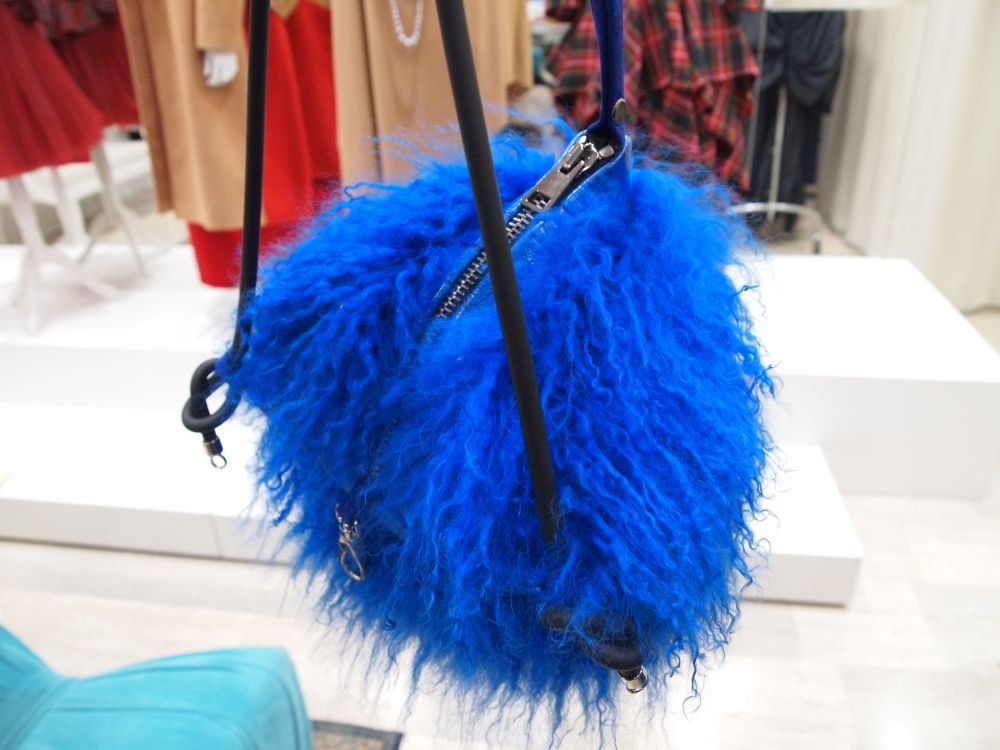

Tanja Jerman and Matej Klemen are teachers of Slovene at the Centre for Slovene as a Second and Foreign Language, and have taught for quite some time in Slovenia and around the world. They are also authors of several textbooks and other publications for learning Slovene. We got in touch with them asked some questions about their experiences teaching this often challenging language.
1. People say that Slovenian is one of the hardest languages to learn. What are your thoughts?
Matej: This is a common thing to say. However, I think Slovene is just as easy or just as difficult – if you want – as any other language. Starting learning any language with the mental set ‘this is so difficult’ is definitely not helpful. If you speak another Slavonic language, learning Slovene is not difficult at all, as far as I can judge from my experience teaching Slavonic speakers. As for English speakers, it might be that they experience some difficulties when starting learning Slovene as the languages are quite different. Once they grasp the structure of Slovene, they are fine. Some of my students who speak English as their first language now work as translators from Slovene into other languages, researchers etc.
Tanja: I agree with Matej and of course disagree with the stereotype of Slovene being a difficult language. To add a couple of things, Slovene uses Latin script, has quite a few borrowed words and all this helps the language learners. At the beginning of the course, I like to tell my students that Slovene only has three tenses: only one past, only one present and one future tense. This cheers them up a bit. There might be quite a lot of endings regarding nouns and adjectives. However, if you compare Slovene to let’s say Finnish or Hungarian with their 15 or 18 cases, respectively, Slovene is a piece of cake with only six of them.
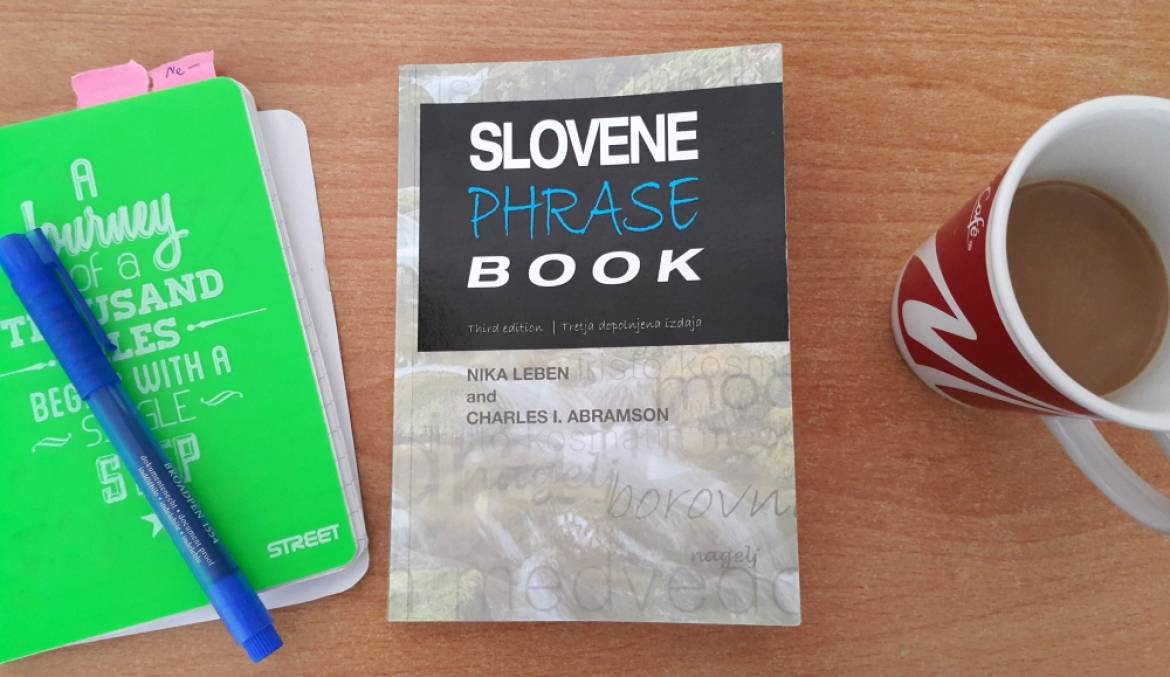
Photo: JL Flanner
Related: New Courses & Nationality Exam Prep at the Centre for Slovene as a Second & Foreign Language
2. Tell us about the typical experiences of foreigners who come to you to learn Slovenian as total beginners – the problems they face, the things they find easy, when people stop learning, etc.
Matej: Our philosophy at the Centre for Slovene is that there are practically no beginners in Slovene. Everyone knows at least something. I only once met a person who wanted to join our courses and she said she knew absolutely nothing. It turned out that she knew three Slovene words (and really only three!): sol (salt), mleko (milk), kosmiči (cereal). She picked them up from packages in the store. As a teacher, I have to see this potential and use it to facilitate learning, acquiring new vocabulary.
Tanja: Once the students grasp the phonetics of Slovene, they realise how easy it is actually to read and write in the language. However, they have to invest some time in learning vocabulary and above all they need to practice speaking. This quite often presents a problem for our students. People in Slovenia tend to switch from Slovene into the foreign language they speak, so the students of Slovene struggle to find a partner to talk to in Slovene. Thus, one of the first phrases I teach them is Učim se slovenščino. Prosim, govorite slovensko.
At the Centre for Slovene, we try to make the learning process as comfortable as possible, on the other hand also as useful and authentic as possible. At the very beginning, we teach the most frequent phrases and vocabulary, basic and useful grammar structures. We do not overburden students with exceptions, irregular verbs etc. if it is not absolutely necessary.
Matej: When do our students stop learning? I believe that when they reach the level they need, once they run out of time, money… Some of them return to our Centre again and again as the learning process is a never-ending story.
Learn about the Centre's Ivan Cankar boardgame here
3. So many foreigners seem to have a mental block about learning Slovenian, especially if they can live and work here without learning the language. How do you 'unblock' that mentality?
Tanja: As person decides to learn a new language, they are usually already ‘unblocked’ and have already made the first step. My task as a teacher is to motivate this person to make progress, to support them on their way. Every little success in communication, in comprehension (e.g. being successful in buying some fresh vegetables at the Ljubljana market in Slovene, giving a compliment to your mother-in-law, etc.) shows their progress in language learning and brings satisfaction.
Matej: There might be sometimes a person who really concentrates on speaking perfectly and not making any mistakes rather than speaking fluently or speaking at all. I try to explain that knowing all of the details of the grammar will not get them anywhere if they do not relax and speak. By creating a relaxed and supportive atmosphere in the classroom, I am usually successful in this.
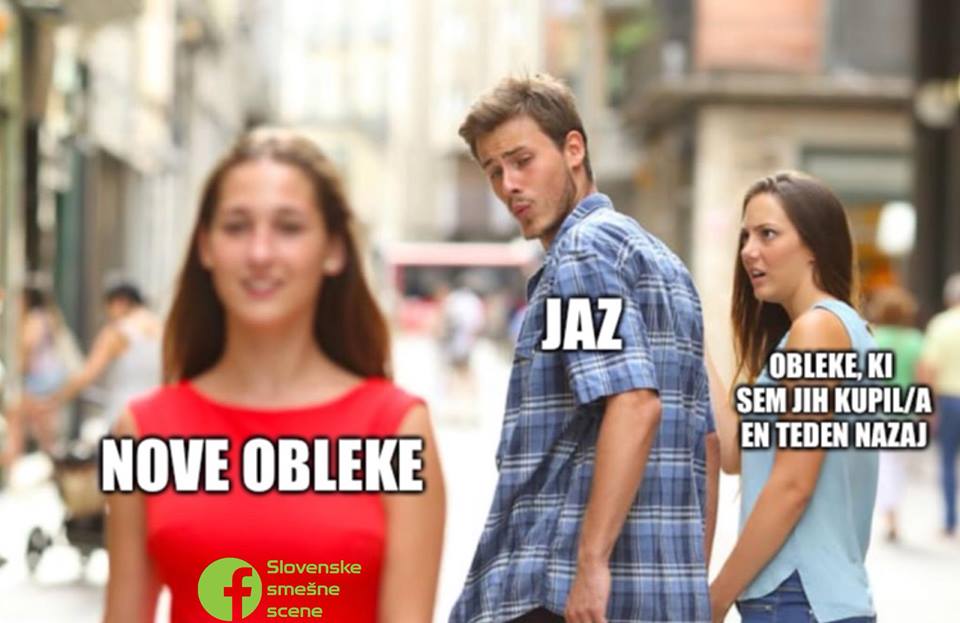
Learn Slovene with memes, with more for you here
4. Language errors can be funny. Are there any common one’s that make native speakers laugh?
Tanja: A very useful phrase, especially in summer is ‘I’m hot’. Please, do not translate it word by word! You will end up with Vroč sem! or Vroča sem! It would sound inappropriate or you might give a person the wrong impression – advertising yourself as a hot babe. The adjective vroč (hot) is normally used with weather (vroče vreme – hot weather, vroč dan – hot day). When feeling hot, use a phrase Vroče mi je. Also, I would not swear by the Google translate. I once came across a sentence Vabim te na datum., literally: I’m inviting you for a date. where the word date stands for ‘a particular day’. Google translate was not able to realise the person wanted to invite me to a different thing, i.e. zmenek.
Matej: One of the most frequent verbs is iti (to go), which is irregular. It’s really important to learn its specific forms. If you simply follow the standard rules, you might end up with a sentence like Včeraj sem grel plavat. (Yesterday, I warmed swimming.) instead of Včeraj sem šel plavat. (Yesterday, I went swimming.).
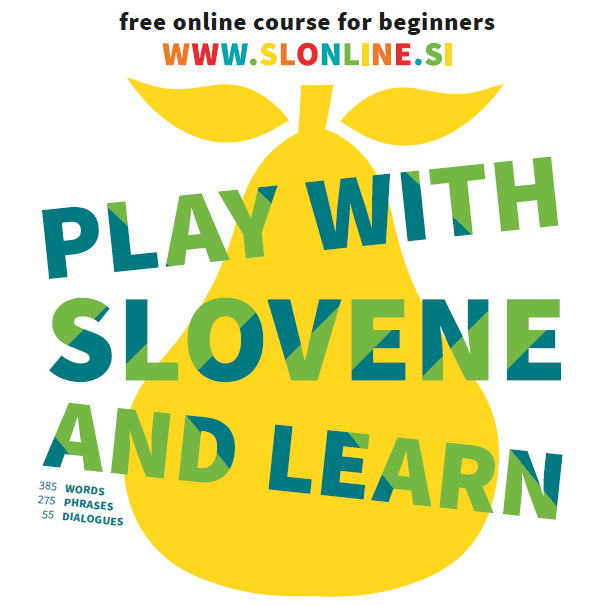
Learn more about the course for learning Slovenian online here
5. What do you find difficult about speaking English?
Matej: For me, finding the right expression can be tricky. Regarding grammar, I have always struggled with if clauses. If (!) I begin a sentence and manage not to remember it’s an if-clause, then I am OK. However, if my brain senses the sentence is an if-clause it just melts, and the result can be barely intelligible.
Tanja: Oh, don’t be silly! I told you so many times that grammar is not the most important bit of the language. However, it is true that some Slovenes tend to ignore some English grammar rules. Just listen to our English and you will hear all the difficulties we encounter in using tenses (perfect tenses specifically), definite and indefinite articles, in ignoring the difference between long and short vowels. Guess what a sheet becomes in Slovene pronunciation. We are sometimes close to the Italian guy from the following joke.
6. Learning Slovene is a serious business. Why should people sign up for a course at the Centre, and what is on offer with your language school?
Matej: The courses at Centre for Slovene have been around for more than 30 years. We are a part of the Faculty of Arts, University of Ljubljana. The Centre has an expertise in researching and developing the field of Slovene as a second and foreign language, teaching, testing and certifying language proficiency. We also publish textbooks and handbooks for teachers, organise teacher trainings. We’ve recently developed an on-line course www.slonline.si which has proved very popular around the globe as it is available in seven language combinations free of charge. In short, we really are the centre regarding Slovene as a foreign language.
Tanja: I would also like to point out our experienced teachers and quality materials. As already mentioned, we create a stimulating environment where our students reach the best results. We offer courses all year round for adults as well as for young learners, on different levels from A1 to C2, for professionals as well as language lovers. Our offer is always updated on our web site. So there are no excuses not to join us.
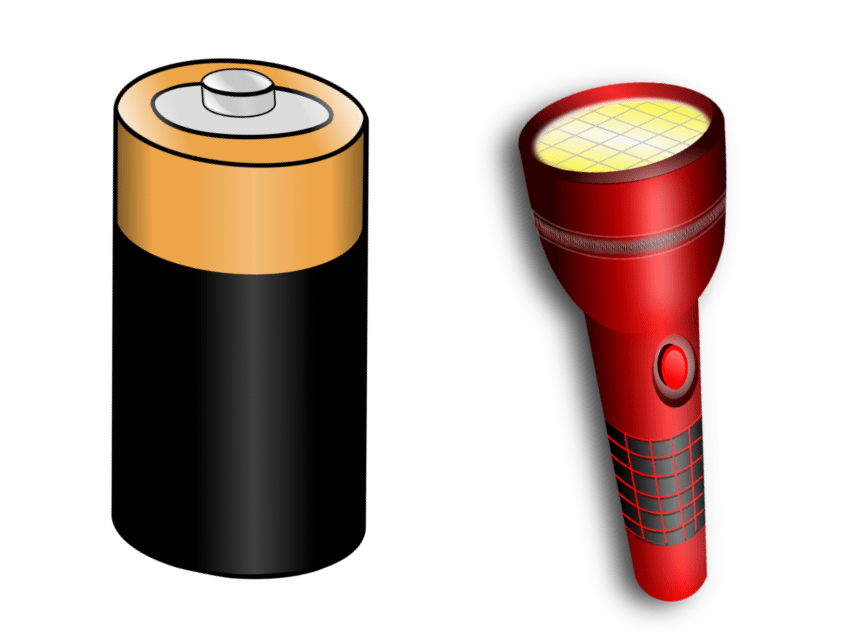
Learn some false friends in English and Slovene here
7. What’s your best advice for people learning Slovenian and thinking about giving up?
Matej: Find a minute or two every day to do something relaxing related to Slovene: listen to a pop song, watch a YouTube video, cook a recipe from a Slovene cook book, check a Slovene blog post, scroll through some news site… Something you like to do. It does not need to be a lot of time but it is important to keep the contact with the language. You have to take the initiative. You might as well follow us on our Twitter, Facebook or Instagram.
Tanja: Slovenes are very happy to hear a foreigner speaking even the basic words in Slovene. We do appreciate the effort. It is good to keep this in mind!
8. What are some Slovenian cultural products that foreigners who learn the language should be aware of?
Matej: I like to play quite a few Slovene songs in my classes. As the festive time is getting closer, my recommendation is a classic Bela snežinka. It might be a bit old fashioned but if you listen to it, you will learn some basic vocabulary and get to know a Slovene evergreen which will get you into the festive mood.
Tanja: Also, do not forget about potica – the famous festive walnut yeast-dough cake.
You can learn more about the work of the work of the Centre for Slovene as a Foreign Language, and perhaps sign up for a course, free online or in person here
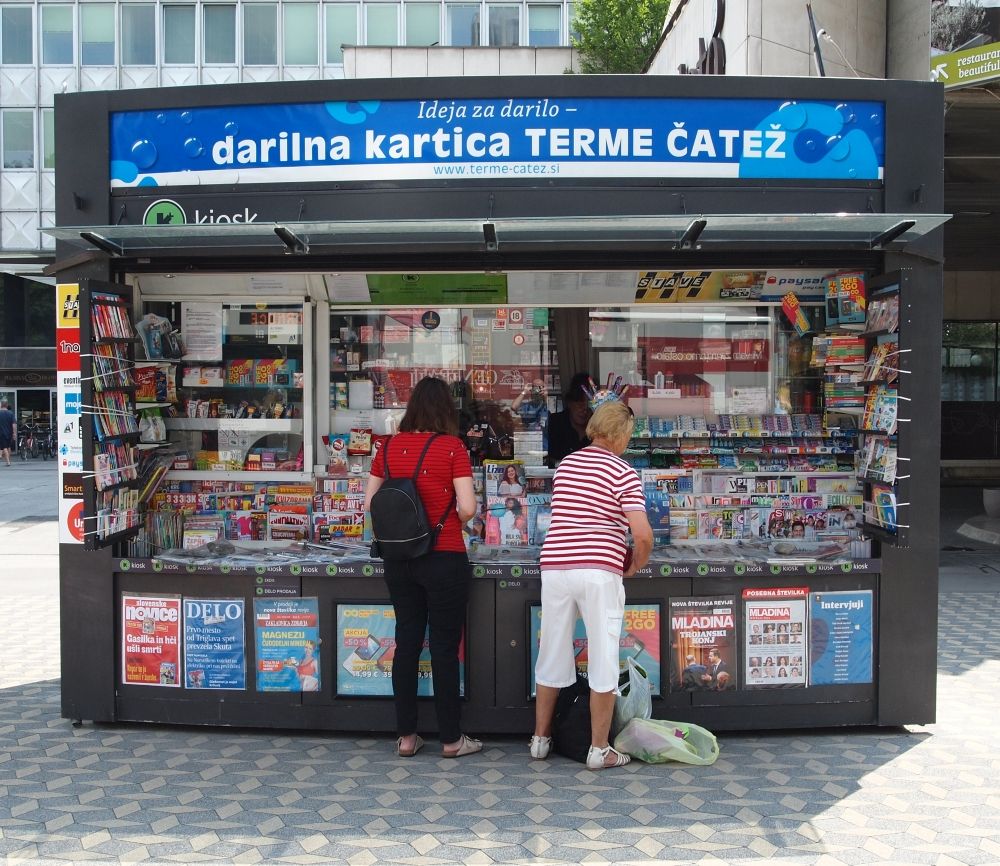
Photo: JL Flanner
Want someone to hold your hand while you're reading Slovene? Check out our weekly Slovene-English dual texts.
STA, 3 December 2018 - Yaskawa's emerging plant in Kočevje, which was visited by Economy Minister Zdravko Počivalšek, Japanese Ambassador Masaharu Yoshida and the boss of the Slovenian subsidiary of the Japanese robotics group Hubert Kosler on Monday, will start test runs in January and become fully operational in the second half of next year.
Yaskawa is expected to obtain the operating permit for the plant, where seven types of robots will be manufactured, this month and launch test production in January.
So far the company has employed 30 people, but the number is to grow to between 60 and 70 by March and to 120-150 by March 2020.
The EUR 24.6m investment is then to start operating at full capacity in the second half of the coming year, with the production expected to reach 6,000 robots a year. By 2023 the headcount is to reach around 200.
Economy Minister Počivalšek sees this as a confirmation of Slovenia's status as "an excellent investment location", while Yaskawa's investment will also make the country an important regional player in robotics.
In addition to the plant, the Japanese group plans to establish an R&D centre to strengthen and upgrade cooperation with faculties and institutes including the Faculty Of Mechanical Engineering, Faculty of Electrical Engineering and the Jožef Stefan Institute.
Počivalšek also pointed out that this plant was a good initiation for another Yaskawa investment planned in Slovenia, a plant that would produce motors, servo regulators and inverters.
Production at plants in Slovenia is to satisfy about 75% of needs for Europe, Middle East and Africa. For the rest of the robots coming from Japan, Slovenia will serve as the main distribution hub.
All out stories on robotics in Slovenia are here
STA, 3 December 2018 - Slovenia, whose exports and imports rose by 14% last year, improved its standings among EU countries in terms of foreign trade, the Statistics Office (SURS) said on Monday. Slovenia's integration in international trade of goods reached 64.4%, which puts Slovenia on the fourth place in the EU.
In terms of integration in international trade of services, which last year reached 13.6%, Slovenia ranked 14th among EU countries, while it was 15th in 2016.
Slovenia exceeded the EU average both in terms of import and export growth. The average export growth in the previous three years was 5.1% and the growth of import was 3.5%.
In terms of the share of imports and exports of goods and services in GDP, Slovenia ranked eighth, which is up two spots from the year before. It was preceded by Luxembourg, Malta, Ireland, Slovakia, Hungary, Belgium and the Netherlands.
Foreign direct investments in Slovenia totalled EUR 13.7bn at the end of 2017, which is a 5.4% increase year-on-year. In the last three years, FDI rose by 12-15%.
The share of FDI in GDP stood at 31.85% last year, which compares to 32.1% in 2016.
Slovenia's direct investment abroad totalled EUR 5.9bn at the end of last year, rising by 2.9% in a year. The average growth in the previous three years was somewhat higher, at 3.5%.
Slovenia's direct investments abroad amounted to 13.7% of GDP last year, which is half a percentage point lower than in 2016.
More details can be found at SURS
STA, 3 December 2018 - Local elections 2018 were bound to produce some surprises, and the voters delivered, kicking out many mayors that had been seen as shoo-ins given the incumbency advantage that has become entrenched in the last decade and a half. For the parties at the national level, the picture is mixed, though most find something to cheer.
Independents - both truly and notionally independent parties and lists - remain the strongest force in local politics measured by the number of mayors and the council vote, an indication according to analysts of people's deep distrust of the political establishment.
In 212 municipalities, they accounted for over 31% of the cumulative council vote, with small, local parties adding another 10%. Both figures are slightly up from four years ago. They also account for 123 mayors, up from 115 in 2014, and another eight mayors were backed by coalitions of parties, the same number as four years ago.
Long the biggest party on the national scene, the Democrats (SDS) remain the strongest force among the established parties at the local level. They have managed to increase their share of the council vote from 14.3% to 16.7%, though they have fewer mayors, 17 compared to 19 four years ago.
However, by the party's own reckoning they have 54 mayors that they either fielded directly or endorsed.
SDS does well in rural areas, less so in cities and towns
"We're particularly glad that people have recognised that the SDS is a party with roots and has hence strengthened its position in urban and other municipalities," the party said after the run-off on Sunday.
The SDS has a strong presence in small rural municipalities, but they have not directly won a single urban municipality, even as their candidates made a strong showing, in particular in the capital Ljubljana, and the candidate they endorsed won in Novo Mesto.
The situation is reverse with the Social Democrats (SD), who appear to have regained their standing in cities.
SD mayors will lead four of the eleven urban municipalities - Kranj, Velenje, Ptuj and Murska Sobota - and had endorsed the winner in Slovenj Gradec.
But overall, they have 16 mayors that officially ran on SD tickets, down from 20 four years ago. Their share of the council vote increased marginally to just over 10%.
SD leader Dejan Židan said yesterday that the party was "returning to the cities," and doing this by insisting that its candidates be respectful in political dialogue. "Unfortunately, that cannot necessarily be said of other candidates."
Somewhat surprisingly, the non-parliamentary People's Party (SLS) remains a force to be reckoned with in local politics. Despite not having been in parliament since 2014, its robust local network has helped it secure 26 of the 212 mayoral offices with just 51 candidates for mayor.
In local councils, too it remains strong, though with just 6.2% of the overall council vote. The figure points to a problem that has almost always plagued the SLS: it is strong in small, rural municipalities but has virtually no presence in large towns and cities.
The only urban municipalities where it has secured council seats is in Celje, where its former president Bojan Šrot has been mayor for two decades, and Novo Mesto and Velenje, where it has one councillor each.
Marjan Podobnik, who recently returned to the helm of the SLS to turn the party's fortunes around, said the result was "incredibly encouraging considering the path that we have walked in recent years", confident that it will be similarly successful in the EU elections in spring.
Related: Our guides to many of Slovenia’s political parties can be found here
Good and bad news for the parties in government
For the coalition parties, the election was a mixed bag at best.
The list of Prime Minister Marjan Šarec was never expected to perform well, having fielded mayoral candidates in only nine municipalities and council candidates in just a few dozen. At the end of the day, its share of the council vote was 2.5%.
But in Šarec's home town of Kamnik, where the prime minister served almost two full terms as mayor, his hand-picked successor, deputy mayor Igor Žavbi, surprisingly lost to New Slovenia (NSi) deputy mayor Matej Slapar by more than 20 percentage points.
Šarec did not dwell on the outcome beyond saying that this marked the end of his eight-year reign in Kamnik and that Slapar was a good candidate who would do the job well.
The fellow coalition Modern Centre Party (SMC) suffered a blow, having four years ago failed to get a single mayor elected but grabbing 11% of the council vote on the back of its win in the general election.
Its share of the council vote plunged to 4% this year but it has two mayors, Saša Arsenovič in Maribor, who wanted to run as an independent but opted for the SMC because he did not have the time to collect the voter signatures, and Alenka Kovač in the tiny southern municipality of Osilnica.
It is notable, however, that even though the SMC is one of many of parties in recent years formed just before the general election it is the only one not to have been completely burned in subsequent local elections, a fate that for example befell the Ljubljana mayor's party Positive Slovenia.
The Pensioners' Party (DeSUS) never excelled in local elections, but its result is even worse than four years ago. It has one mayor, just like before, but its share of the council vote dropped from 7.5% to under 5%.
The Alenka Bratušek Party (SAB), known as the Alenka Bratušek Alliance (ZAB) four years ago, performed better, raising its share of the council vote from 0.2% to 0.8%, but it does not have a single mayor and remains a marginal force at the local level.
In the ranks of the opposition, the Christian democratic New Slovenia (NSi) made significant progress. It has ten mayors, up from seven in 2014, and its share of the council vote remained almost level, rising by 0.3 points to 6.4%.
Much like the SLS, the NSi remains largely confined to smaller communities, but analysts have pointed out it is gaining traction in more urban environments as well, Kamnik being a case in point.
Like the SAB, the Left remains more or less on the margins in local politics, having just 3% of the council vote compared to roughly 2% that its three predecessors won four years ago. It does not have a single mayor either.
The results of the general election show that it has a strong base in the capital Ljubljana, where it got 8.5% of the council vote, but it is struggling to expand beyond its urban base, having a progressive platform that is finding better reception among young urban voters.
The far-right National Party (SNS) remains on the margins as well, with just 1.1% of the council vote and not a single mayor.


